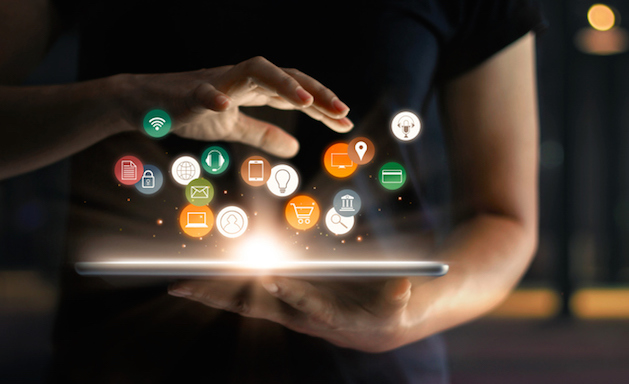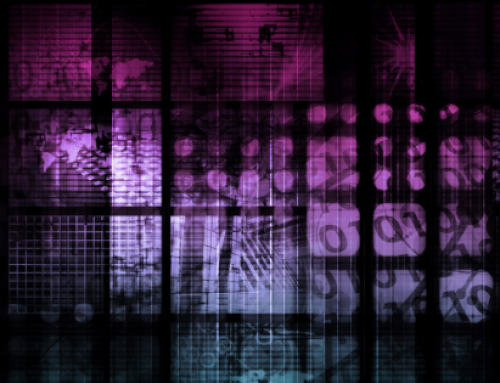The term the Internet of Things means the following……
’The Internet of things (IoT) is the extension of Internet connectivity into physical devices and everyday objects. Embedded with electronics, Internet connectivity, and other forms of hardware (such as sensors), these devices can communicate and interact with others over the Internet, and they can be remotely monitored and controlled’. Wikipedia
…..and is set to change the way we live our lives and do business in the future.
The rapid growth of the Internet of Things is fast becoming essential for companies wanting to add a digital presence to their existing operations, services or products. Any device with an on and off switch can be connected to the Internet and/or to each other, including mobile phones, coffee makers, washing machines, virtual assistants (Alexa, Google), lamps, wearable devices and anything else you can think of.
Devices are embedded with electronics, software sensors and network connectivity to collect and exchange data to create a smart world where we can interact with these devices and they know when we need items i.e food shopping items and responding to voice commands from us.
Businesses are using IoT to improve business operations the main uses include
predictive maintenance, smart metering, asset tracking, and self-driving cars. This is just the start. The Internet of Things has the capability to become widespread in all our lives at every level of society.
Industries are using IoT in the following ways:
- To monitor the structural integrity of buildings, roads, bridges, etc.
- To map noise/pollution/signal strength etc.
- Smart grid power, citywide lighting/heating solutions.
- Smart tags for sorting waste management, trash level/cleaning quality control.
- Virtual tours in real-time; AI
‘Smart’ systems are being implemented into every aspect of our lives including:
- Smart roads – traffic congestion analysis, parking, vehicle auto-diagnostics
- Smart homes – power. heating, water use optimisation, remote control appliances, intruder detection.
- Smart health – fitness trackers, homed devices, ‘smart pill bottles’
- Smart factories, stores and logistics – product ordering, supply chain control, inventory management, shipment conditions
Let’s be honest – there are endless ways in which IoT applications can be implemented into our lives.
McKinsey estimates that IoT could potentially generate up to $11.1 trillion a year in economic value by 2025 by unlocking disruptive new digital products and business models.
Examples of how IoT is being utilised by some companies who have created Smart Apps:
Insurance industry – Insurance companies are offering discounts to policy-holders who wear internet-connected Fitbit wristbands! A persons life insurance can now be defined by tracking their health and fitness and adjusting their policy accordingly. This is an IoT application, allowing the insurer to produce smart lifestyle products that will benefit the customer positively.
Media industry – Sensors are being used to monitor and understand footfall at events by tracking in the turnstiles. The IoT application visualises the attending footfall patterns in real-time which helps sponsors to understand the best placement of advertising.
Business services – By collecting data from sensors in devices like coffee machines, soap dispensers, paper towel dispensers rather than doing manual checks, multi-device IoT software has significantly cut costs and improved service levels. The software enables support personnel to receive alerts regarding service issues and take immediate action.
Airlines – Are trying to improve efficiency by providing engineers with a live view of locations of maintenance equipment by using an equipment tracking app. This application is making for improved customer experiences, reliable, on-time flights and cost-saving improvements.
Development of IoT.
Most IoT components are made up of tags, sensors, embedded computers and actuators integrated into objects. Some IoT objects are “vertical-specific” (like a speciality valve for an industrial device), others (like a grid-controlled smart bulb) can find use in many areas.
Tags or iBeacons, will “deploy and forget”, whereas others will constantly reporting data that is monitored and controlled via a web interface by the owner, or provided by companies that implement IoT-as-a-service for customers.
The main driving forces behind IoT, and therefore shaping its future, are commoditisation and interoperability, which in turn depend on:
- The development of embedded devices (low-power, reduced cost computers, most frequently based on the ARM architecture).
- Improved communications protocols (GSM, WiFi, Bluetooth variants)
- Software platforms
- Influential companies like Amazon, Google, Apple, IBM, and Microsoft are also playing a part as drivers of IoT.





Leave A Comment
You must be logged in to post a comment.